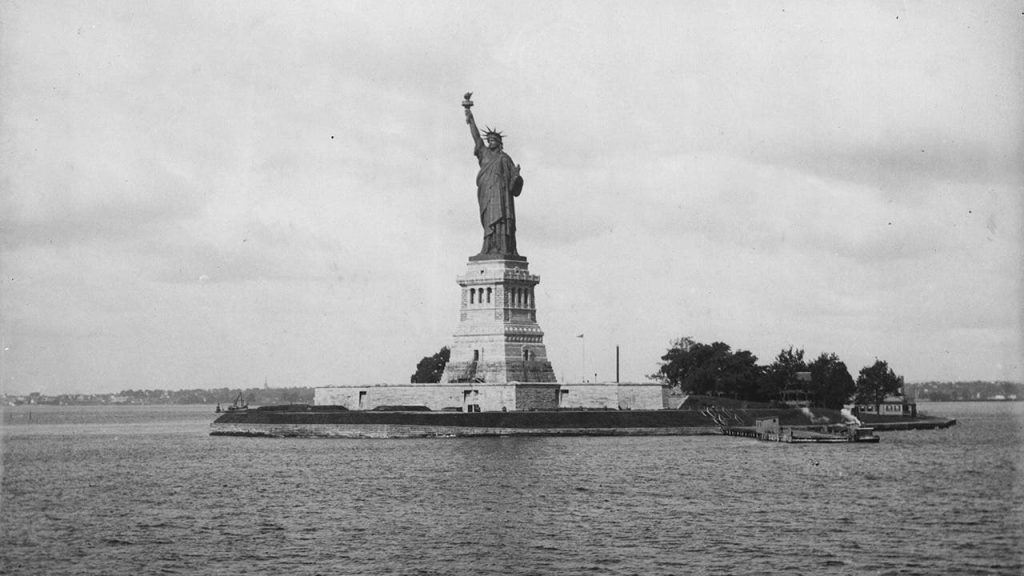The Statue of Liberty, a symbol of unity and freedom, was unveiled on Oct. 28, 1886, in a ceremony organized by the Franco-American Union and the City of New York. The dedication ceremonies honored both the French and American people, as well as the Statue of Liberty contributors, including sculptor Frédéric-Auguste Bartholdi. More than 1 million people attended the celebrations on and off Bedloe’s Island, now known as Liberty Island, including then-president Grover Cleveland. Festivities included the first-ever ticker-tape parade in honor of the statue, with firefighters, soldiers, and veterans marching down Broadway to the sounds of brass bands and cannons.
The official unveiling was attended by over 2,000 men on the island, with the New York State Woman Suffrage Association chartering a boat for uninvited women to view the reveal from the water. A French flag was draped over the Statue of Liberty’s face to hide her identity before the big reveal. Bartholdi, standing inside her crown, dropped the flag prematurely during a speech by Sen. William M. Evarts, chair of the American Committee, causing celebratory sounds to break out in the harbor, welcoming Lady Liberty home. President Cleveland formally accepted the statue from France as a gift of friendship, acknowledging Bartholdi as “the greatest man in America today.”
Édouard René Lefèbvre de Laboulaye, often considered the “father of the Statue of Liberty,” died in 1883 before the dedication. The day’s celebrations also involved a naval parade to Bedloe’s Island, where 300 ships decorated in red aimed to get a closer look at the statue through the fog and gloomy weather. The festivities marked a historic moment in the symbol of unity and friendship between two nations, as Bartholdi expressed his satisfaction in fulfilling his life’s dream. President Cleveland’s acceptance of the statue highlighted the significance of the friendship between France and America symbolized by the Statue of Liberty.
The dedication of the Statue of Liberty was a significant moment in American history, with over 1 million people attending the ceremonies on and off Bedloe’s Island. The event marked a celebration of unity and freedom, honoring the contributions of both French and American people in the creation of the iconic statue. The grand unveiling included a ticker-tape parade, featuring firefighters, soldiers, and veterans marching down Broadway to the sounds of brass bands and cannons. Bartholdi, the sculptor of the statue, experienced a proud moment as he saw his masterpiece revealed to the world, symbolizing the unity and friendship between two great nations.
The Statue of Liberty was officially unveiled on Oct. 28, 1886, in a ceremony that involved various festivities and celebrations organized by the Franco-American Union and the City of New York. The dedication ceremonies honored both the French and American people, as well as the Statue of Liberty contributors, including renowned sculptor Frédéric-Auguste Bartholdi. The event marked a historic moment in American history, with over 1 million people attending the celebrations on and off Bedloe’s Island, highlighting the significance of the symbol of unity and freedom represented by the Statue of Liberty. President Cleveland’s acceptance of the statue from France as a gift of friendship further emphasized the strong bond between the two nations symbolized by the iconic statue.


